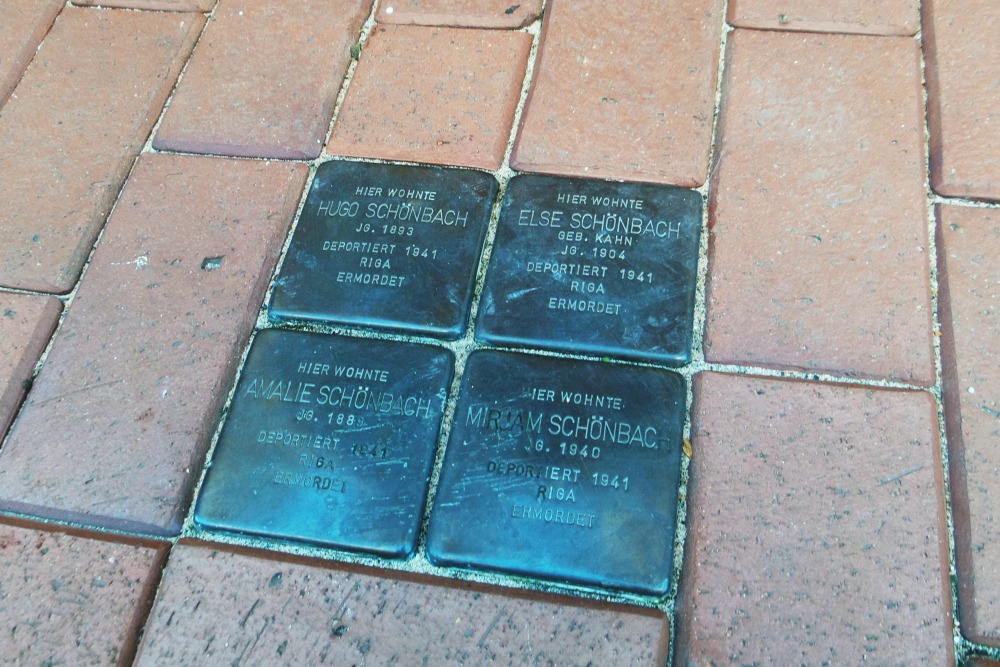Stumbling Stones Georgstrasse 44
These memorial stones (so called Stolpersteine or stumbling blocks) commemorate:
* Hugo Schönbach, born 1893, deported 1941, Riga, murdered.
* Else Schönbach, née Kahn, born 1904, deported 1941, Riga, murdered.
* Amalie Schönbach, born 1889, deported 1941, Riga, murdered.
* Mirjam Schönbach, born 1940, deported 1941, Riga, murdered.
Hugo Schönbach was a cattle dealer (Viehhändler) who was elected to be Head of his neighborhood. Living with him were his wife Else, their baby daughter Mirjam and his sister Amalie. In 1941, all four were deported. At some time later, another Schermbecker saw Hugo working as a forced laborer on road construction. However, the fate of all four is presumed to be murder.
On 10 December 1941, about 1000 people, including the Schönbachs, were rounded up from the Düsseldorf area, held overnight in a crowded shed/abbatoir in Düsseldorf and put on an unheated train the next day to the Riga ghetto. Of those 1000, only 98 are known to have survived the war.
Stolpersteine memorials were initiated by students of the Gesamtschule, Schermbeck.
The small brass plaques, in the pavement in front of houses of which the (mostly Jewish) residents were persecuted or murdered by the Nazis, mention the name, date of birth and place (mostly a concentration camp) and date of death.
In many other cities and villages, mainly in Germany but also in other European countries, the memorials also can be found. There are already many thousands of these plaques and their number is still counting. Almost all Stolpersteine are laid by the German artist himself, Gunter Demnig.
Do you have more information about this location? Inform us!
Source
- Text: Fedor de Vries & Anne Palmer
- Photos: Jens-Erik Janke





